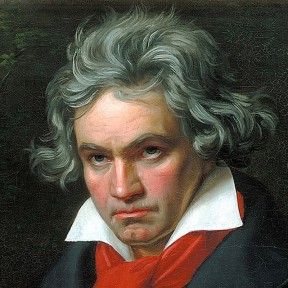Beethoven | Symphony No. 9 in D minor (1824)
The Symphony No. 9 in D minor, Op. 125, is a choral symphony, the final complete symphony by Ludwig van Beethoven, composed between 1822 and 1824.
It was first performed in Vienna on 7 May 1824. The symphony is regarded by many critics and musicologists as Beethoven's greatest work and one of the supreme achievements in the history of music. One of the best-known works in common practice music it stands as one of the most frequently performed symphonies in the world.[3][4]
The Ninth was the first example of a major composer using voices in a symphony. The final (4th) movement of the symphony features four vocal soloists and a chorus in the parallel modulated key D major. The text was adapted from the "Ode to Joy", a poem written by Friedrich Schiller in 1785 and revised in 1803, with additional text written by Beethoven.
In 2001, Beethoven's original, hand-written manuscript of the score, held by the Berlin State Library, was added to the Memory of the World Programme Heritage list established by the United Nations, becoming the first musical score so designated.
00:00 | Intro
01:49 | 1st movement
19:34 | 2nd movement
35:27 |3rd movement
52:12 | 4th movement
54:48 | Ode to Joy
59:23 | Choral
PERFORMANCE
On May 7, 1824, Beethoven shared his 9th Symphony with the world even though he could never hear it. On May 7, 2015 celebrate the anniversary of Beethoven’s most glorious and jubilant masterpiece with Riccardo Muti and the Chicago Symphony Orchestra and Chorus. An exhilarating testament to the human spirit, Beethoven’s Ninth bursts with brooding power and kinetic energy and culminates in the exultant hymn, “Ode to Joy.”
The video is now available free on demand for all to enjoy!
















































